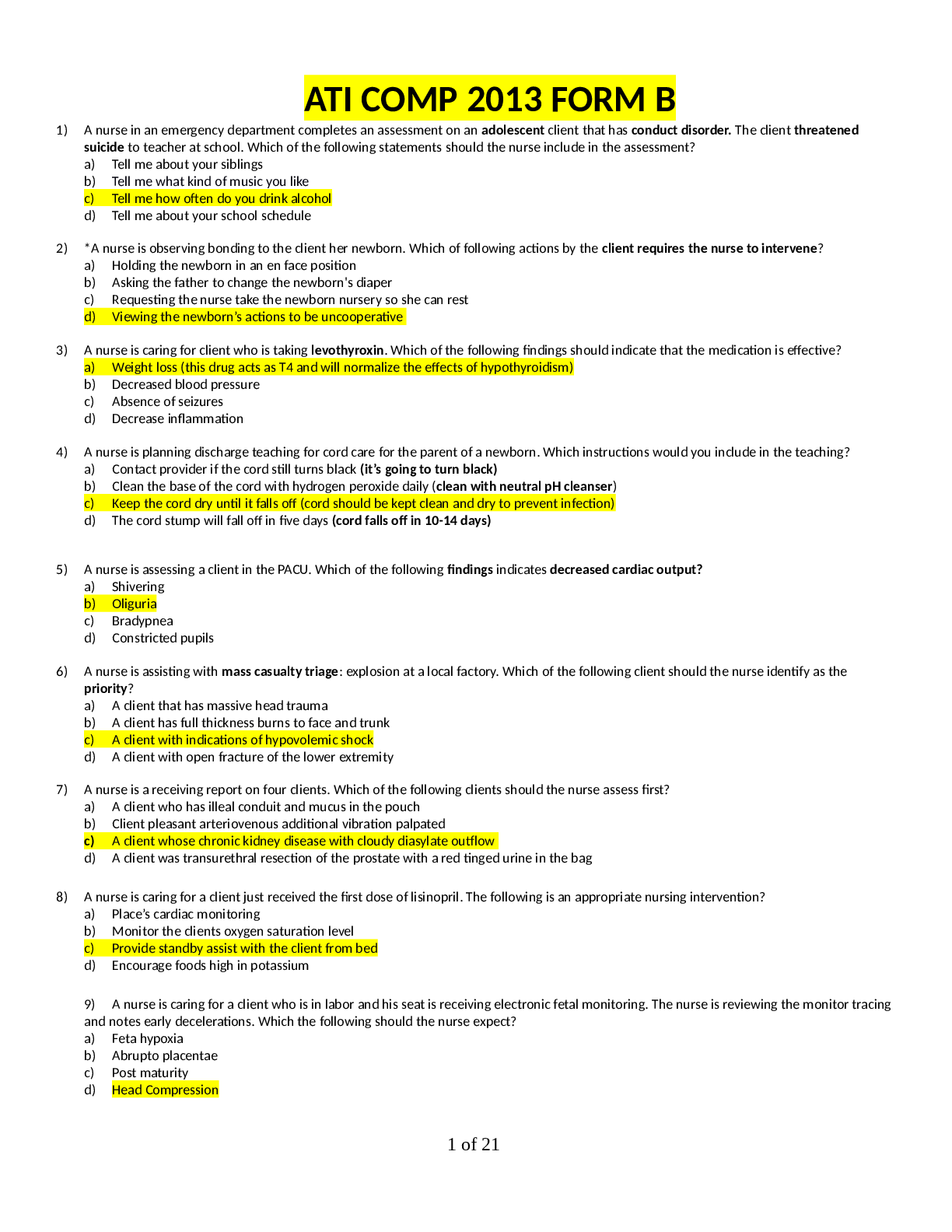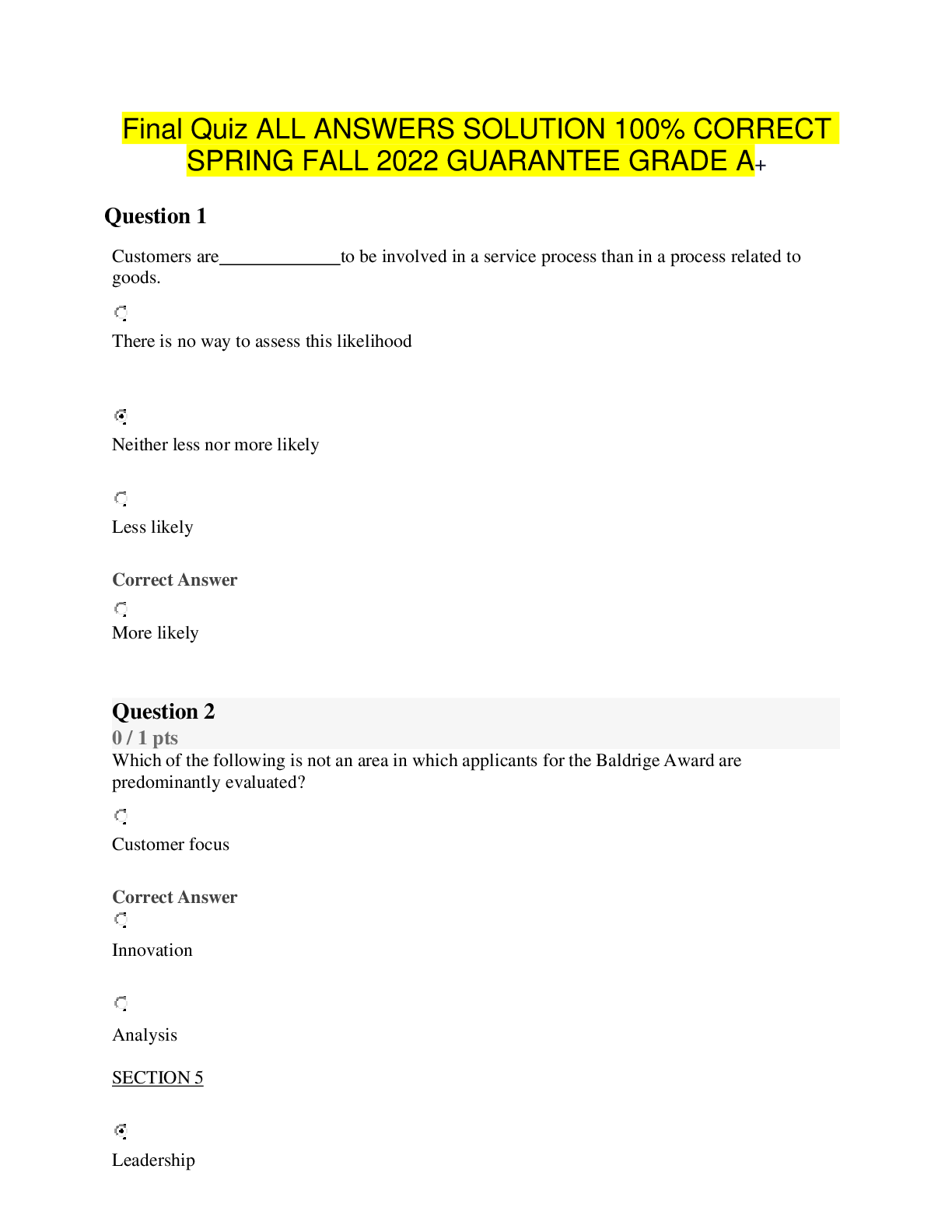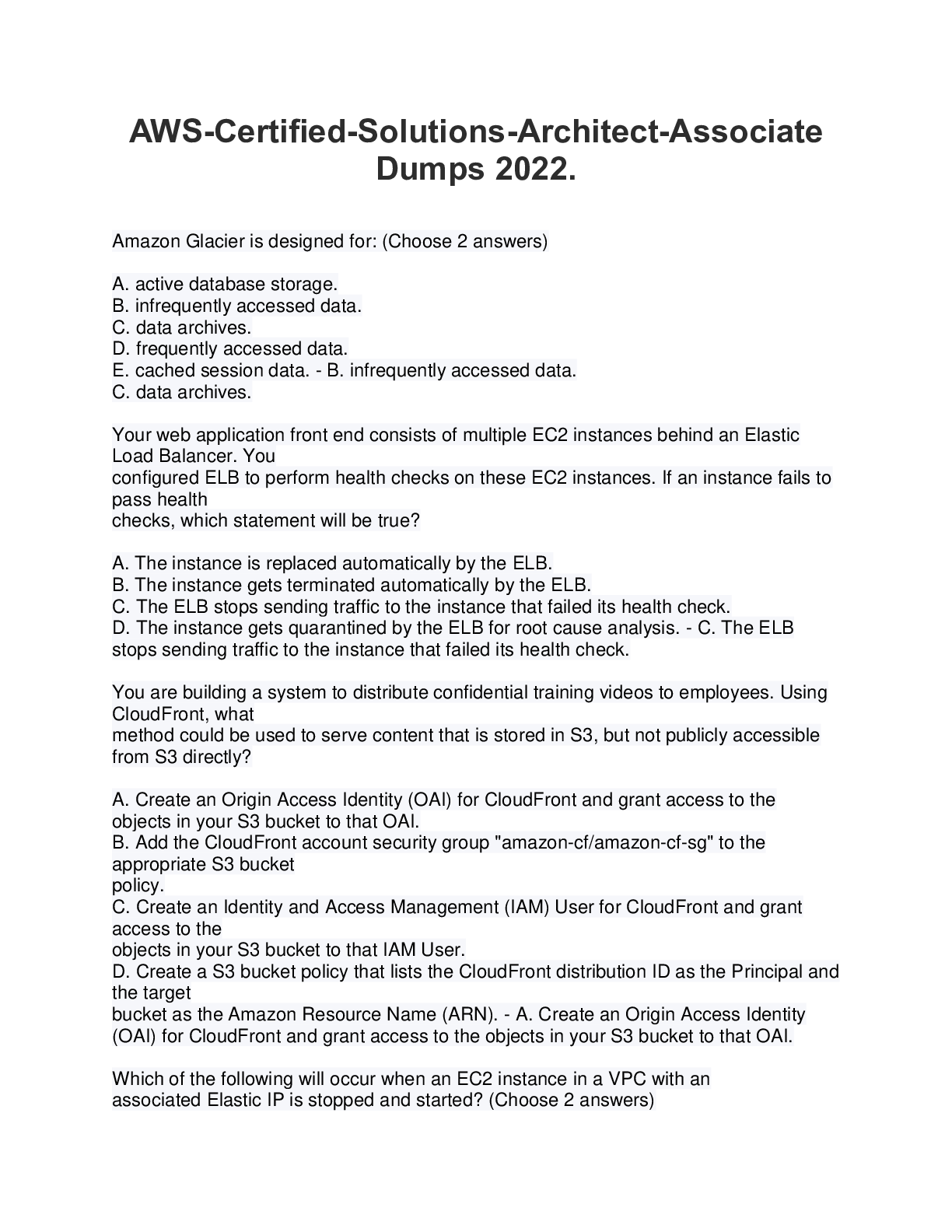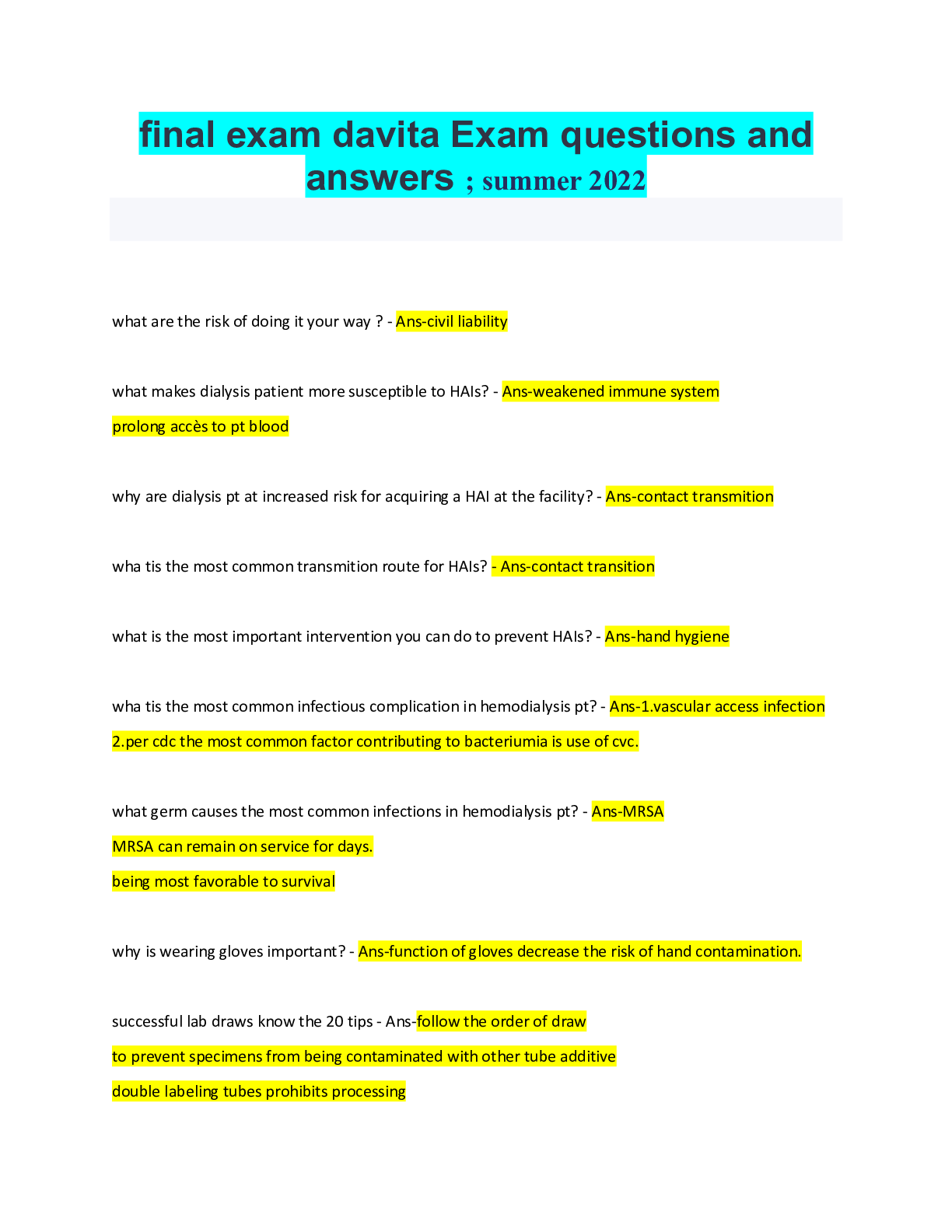ATLS Practice Test 1
Document Content and Description Below
ATLS Practice Test 1 1. Which one of the following is the recommended method for initially treating frostbite? a. vasodilators b. anticoagulants c. warm (40°C) water d. padding and elevation ... e. application of heat from a hair dryer 2. A 6yearold boy is struck by an automobile and brought to the emergency department. He is lethargic, but withdraws purposefully from painful stimuli. His blood pressure is 90 mm Hg systolic, heart rate is 140 beats per minute, and his respiratory rate is 36 breaths per minute. The preferred route of venous access in this patient is: a. percutaneous femoral vein cannulation. b. cutdown on the saphenous vein at the ankle. c. intraosseous catheter placement in the proximal tibia. d. percutaneous peripheral veins in the upper extremities. e. central venous access via the subclavian or internal jugular vein. 3. Which one of the following physical findings suggests a cause of hypotension other than spinal cord injury? a. priapism. b. bradycardia. c. diaphragmatic breathing. d. presence of deep tendon reflexes. e. ability to flex forearms but inability to extend them. 4. A young man sustains a gunshot wound to the abdomen and is brought promptly to the emergency department by prehospital personnel. His skin is cool and diaphoretic, and he is confused. His pulse is thready and his femoral pulse is only weakly palpable. The definitive treatment in managing this patient is to: a. administer Onegative blood. b. apply external warming devices. c. control internal hemorrhage operatively. d. apply a pneumatic antishock garment (PASG). e. infuse large volumes of intravenous crystalloid solution. 5. Regarding shock in the child, which of the following is FALSE? a. Vital signs are agerelated. b. Children have greater physiologic reserves than do adults. c. Tachycardia is the primary physiologic response to hypovolemia. d. The absolute volume of blood loss required to produce shock is the same as in adults. e. An initial fluid bolus for resuscitation should approximate 20 mL/kg of Ringer's lactate. ............................................................................continued............................................................................................. [Show More]
Last updated: 2 years ago
Preview 1 out of 10 pages

Buy this document to get the full access instantly
Instant Download Access after purchase
Buy NowInstant download
We Accept:

Reviews( 0 )
$5.50
Can't find what you want? Try our AI powered Search
Document information
Connected school, study & course
About the document
Uploaded On
May 15, 2022
Number of pages
10
Written in
Additional information
This document has been written for:
Uploaded
May 15, 2022
Downloads
0
Views
146









 NCLEX Study Guide.png)





